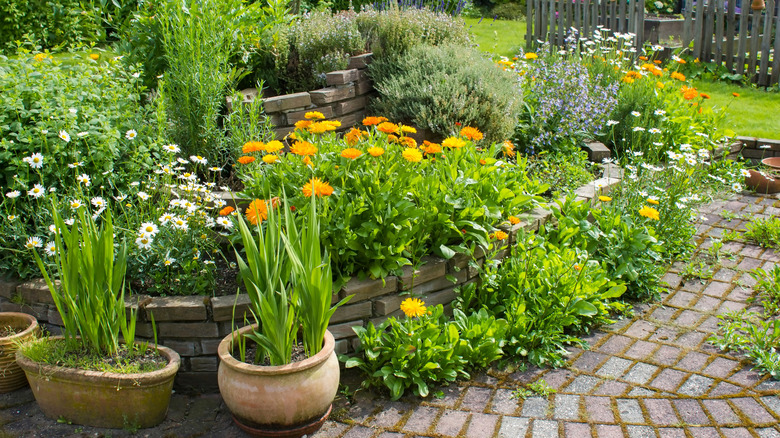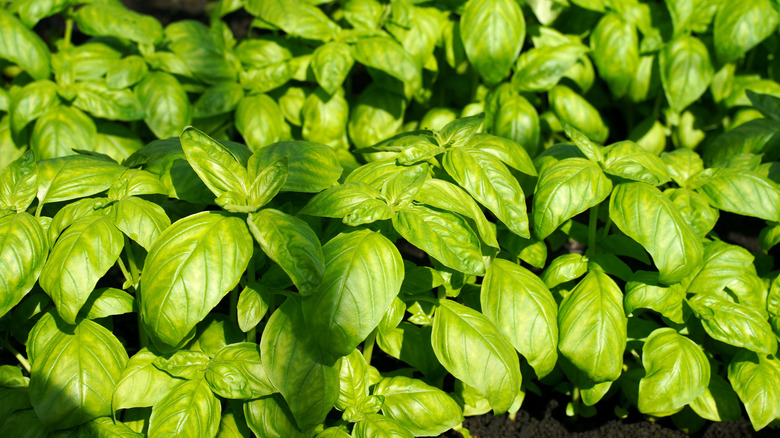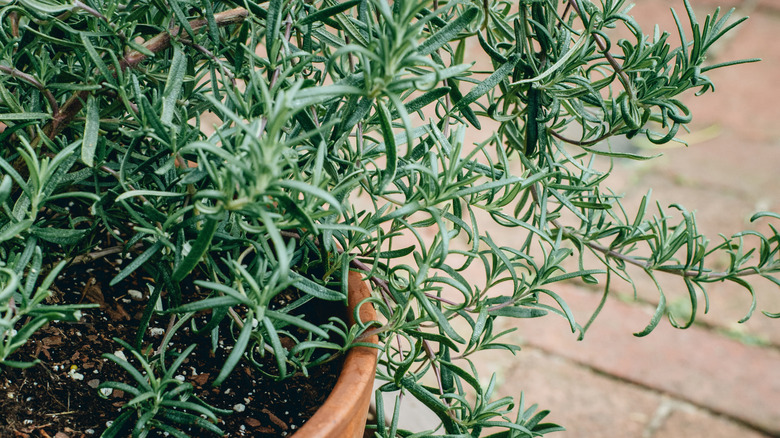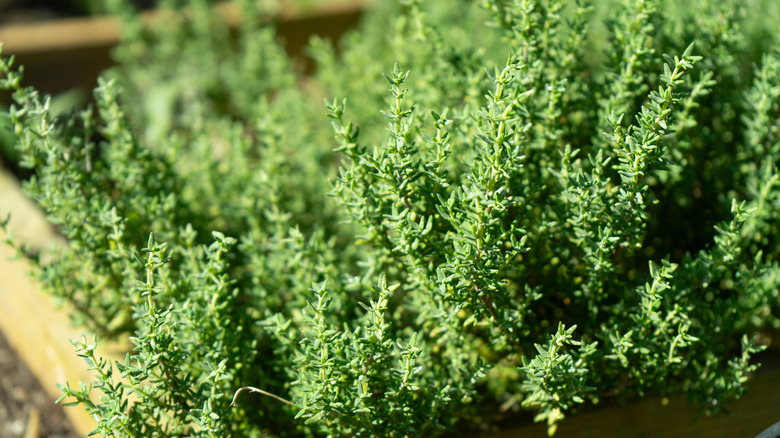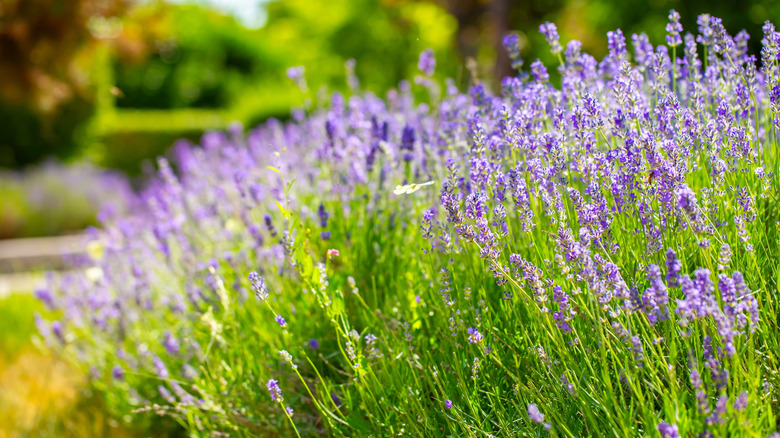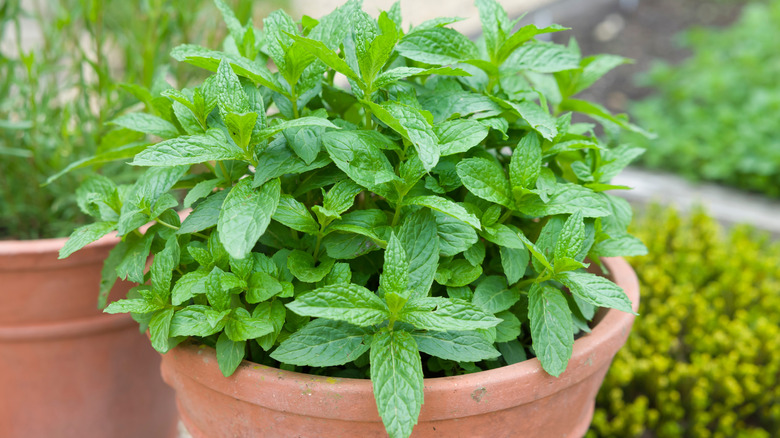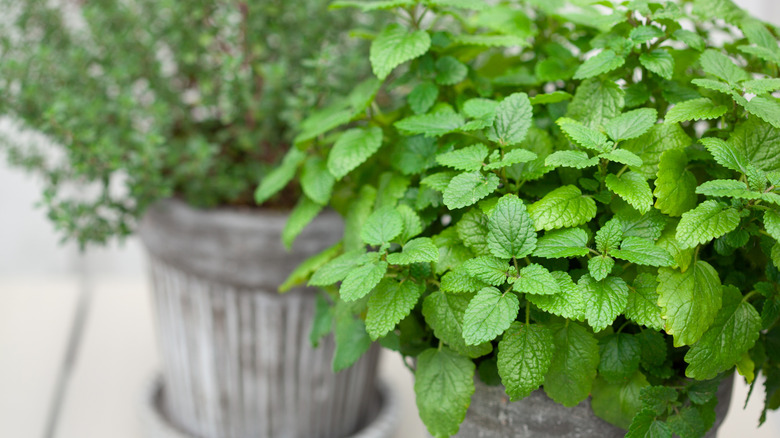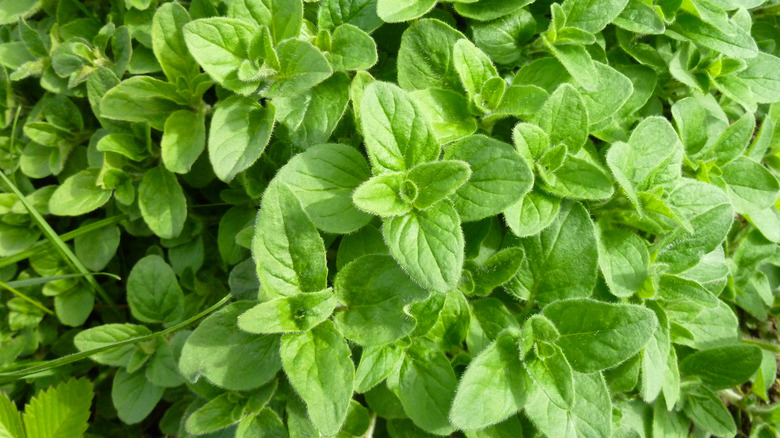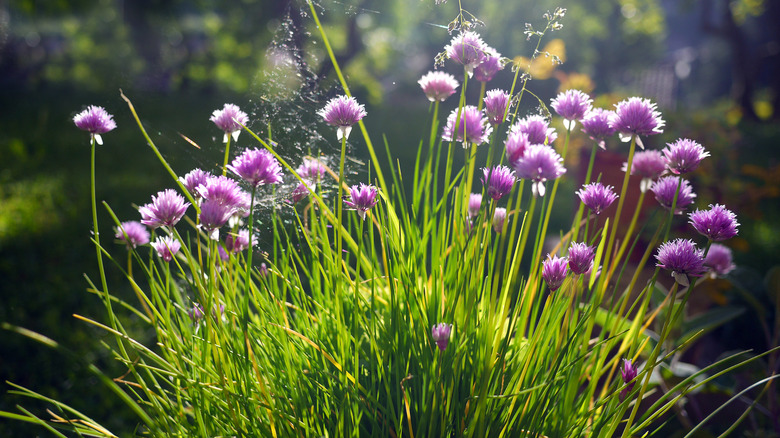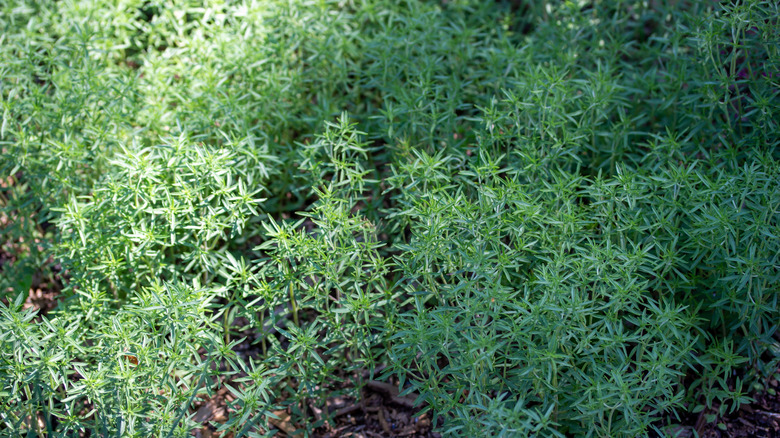9 Easy To Grow Herbs That Can Take The Heat And Will Thrive All Summer Long
Although many herbs are cold hardy as perennials, they are often grown as annuals instead. This works out for gardeners, as these useful culinary plants are easy to grow from seed, and their lifecycle is fairly straightforward. Many herbs are also very heat tolerant, making them suitable for hot summer climates.
A number of herbs commonly grown by gardeners in the United States originate in the Mediterranean region, including southern and coastal Europe and northern Africa. Despite the diversity of international cuisine, many of these herbs are used across cultures, sometimes with different names. Mediterranean herbs thrive in temperate regions with warm to hot dry summers, and rich, somewhat sandy soil — perfect conditions for growing most herbs. If your area is humid in summer, note that rosemary and lavender don't fare well in heavy humidity. However, basil, lemon balm, thyme, cilantro, and mint will all do fine during a humid summer.
Most herbs grow very well in containers. Lemon balm and mint tend to spread, so pots are a better choice for keeping them from taking over your garden. A basic well-draining potting mix with a bit of sand or perlite added is a good growing medium for heat-tolerant herbs. If you have more than one herb growing in a container, group them based on watering needs. Also, terra cotta pots tend to dry soil out faster than ceramic so you may need to water more often. As with any growing tasks, use common sense and pay attention to the weather. If heat becomes extreme (as in the case of a heat wave that lasts for days), even these heat tolerant herbs may need extra watering.
Basil
Basil is a delightful annual herb in the garden or in pots and stands up to heat well. There are many cultivars in a range of colors, textures, and flavors; Italian and Thai basils are very popular. These plants love lots of sun and need regular water. If you live in a place where daytime temperatures spike above 90 degrees Fahrenheit in summer, locate the plants where they will get some afternoon shade to keep them thriving. To prevent basil from bolting in the heat, snip off the flowers: Doing so will give you a bountiful basil harvest.
Rosemary
Rosemary is grown as a perennial in warmer zones (USDA 8 to 11) and thrives in hot, dry summer weather. Many gardeners grow it in containers and bring it inside for the winter, where it does best in a sunny window spot. Rosemary also keeps mosquitos away in the garden and is a natural insect repellent. Being a woody perennial shrub, rosemary needs pruning to maintain its shape. Prune the plants in spring, just after flowering stops, and cut back the green shoots by about a third. This will keep them from getting leggy and will stimulate fresh growth.
Thyme
Thyme is tolerant of heat in summer (especially lemon thyme), but if temperatures reach 85 degrees consistently, it may benefit from extra water and some afternoon shade. Thyme, being a low-growing plant, doesn't take up too much room in pots, and nearly all types of thyme grow easily from seed. Thyme is also a nice ground cover plant for a sunny border edge, and most varieties are perennial in USDA zones 5 through 9. Once established, thyme can get a big leggy, so trim it back during the growing season in the summer to keep it neat and stimulate fresh growth.
Lavender
Lavender hails from temperate regions known for cool, rainy winters and hot, dry summers, and some varieties are very heat tolerant, especially Spanish and French lavenders. This fragrant flowering herb is known for its medicinal, cosmetic, and culinary uses. The lovely spikes of pale violet-blue flowers provide fragrance all summer. English lavender and lavandin hybrid varieties are cold hardy to USDA zone 5. This plant prefers dry, somewhat alkaline soil, and doesn't perform well in moist or heavy clay soil. It benefits from regular pruning to keep the woody plants neat and help them generate fresh growth.
Mint
Mint thrives in the heat if it is kept watered and will bounce back from drought conditions fairly quickly. The mint family is large and includes many herbs, as well as many other garden plants (like bee balm and dead nettle). Mint plants like peppermint and spearmint are perennials and can be quite aggressive growers. The roots can be difficult to eradicate from garden beds, so it's recommended to grow in containers. Keep the plants trimmed by harvesting and snipping the leaves back throughout the season.
Lemon balm
Lemon balm is a fragrant lemon-scented perennial herb that is heat tolerant and grows easily in dry soil or partial shade. It's a member of the very large mint family, and like other mints, lemon balm is an aggressive grower. This plant develops semi-woody roots that may twine around the roots of other plants, so it's best grown on its own in containers separate from the garden bed. The tiny flowers appear in late summer and attract pollinators to their sweet nectar.
Oregano
Oregano is a sun-loving, heat-tolerant perennial herb that prefers dry soil and forms large clumps in the garden. The fragrant leaves have insect-repelling properties, but the tiny flowers attract beneficial pollinators. Oregano can be divided in spring or fall to keep the clumps at a manageable size; if the woody stems get overgrown, cut them back in the fall. Oregano thrives in dry, somewhat "lean" soil, so there's no need to add extra compost or amendments. However, do add some perlite if necessary to make sure the soil is well draining.
Chives
Chives are heat tolerant but grow best when given a bit of afternoon shade; garlic chives and Siberian chives are the most heat-tolerant varieties. This tasty culinary herb is related to the onion and garlic families. The spiky purple flowers are attractive but should be snipped as they start to fade to keep the leaves vibrant and fresh for harvesting. Chives attract beneficial pollinators like bees, but help deter various insect pests, including Japanese beetles. It's best to divide the clumping plants every two to three years to keep them at a healthy, manageable size.
Summer savory
Summer savory is a sun-loving herb that is heat tolerant to 85 degrees. Though it's not as commonly grown in the United States as it is in Europe (where it has a long history of being used in cookery), summer savory is a wonderful herb to include in the summer herb garden. The taste of this culinary herb is said to have hints of marjoram, mint, and thyme. This fragrant annual herb likes full sun, is drought tolerant, and has small purple flowers that attract pollinators.
